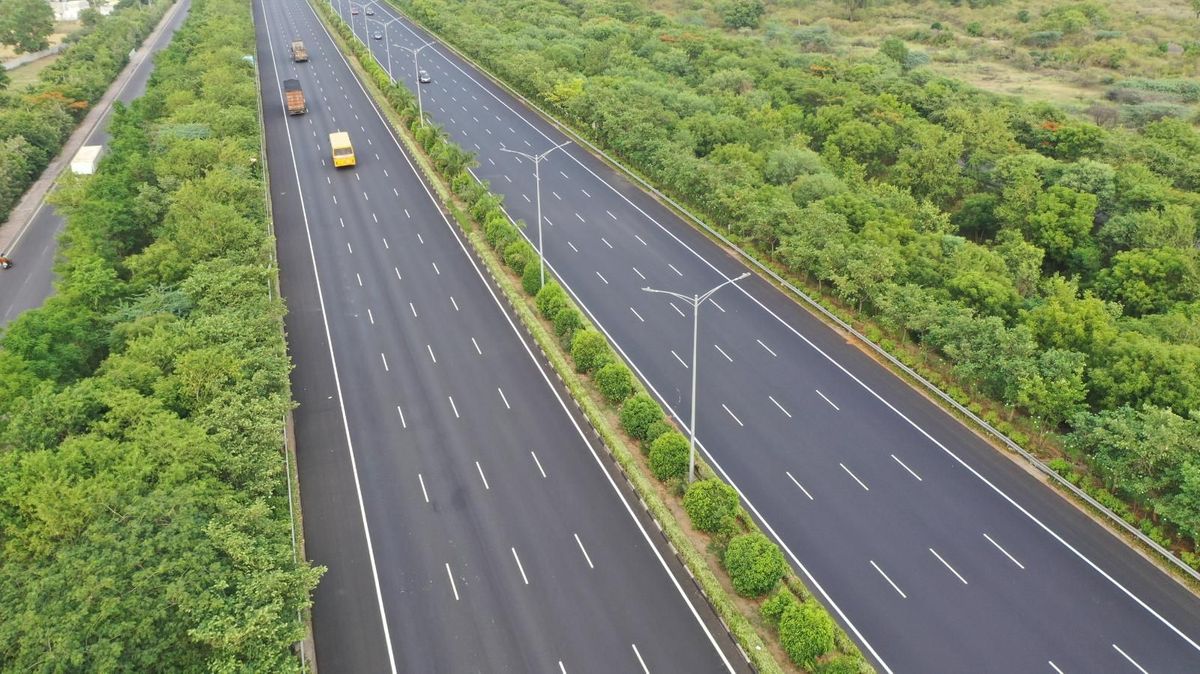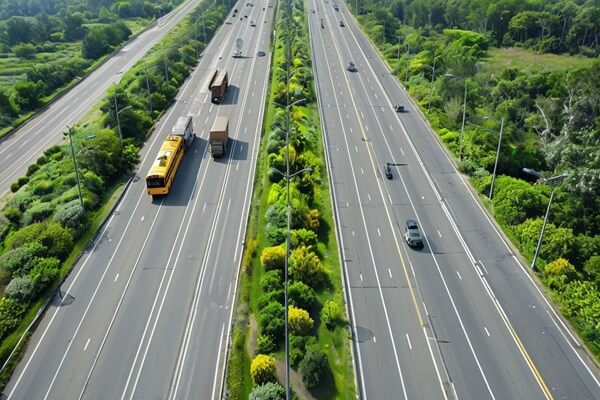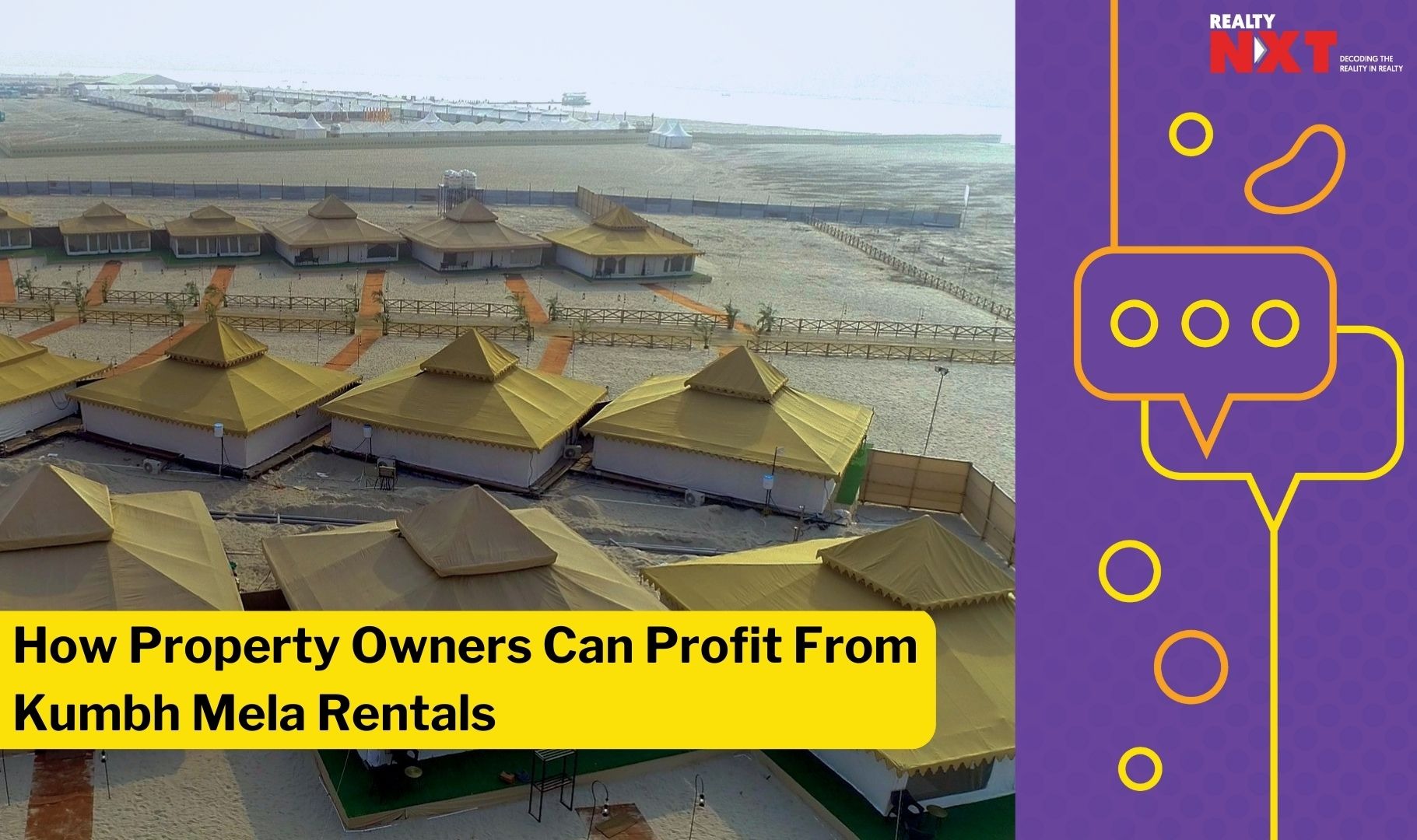The Mumbai-Pune Expressway, officially known as the Yashwantrao Chavan Expressway, stands as a testament to India’s infrastructural advancement. As the nation’s first six-lane, high-speed, access-controlled tolled expressway, it has significantly enhanced connectivity between Mumbai, Maharashtra’s bustling financial hub, and Pune, the state’s cultural and educational center.

Historical Background of Mumbai-Pune Expressway
The conceptualization of the Mumbai-Pune Expressway dates back to 1990 when the Maharashtra government commissioned RITES (Rail India Technical and Economic Service) to conduct feasibility studies for a toll-operated expressway. By 1994, RITES had submitted a report estimating the project’s cost at ₹11.46 billion. In March 1997, the Maharashtra State Road Development Corporation (MSRDC) was entrusted with the expressway’s construction on a Build-Operate-Transfer basis, granting them toll collection rights for 30 years. Environmental and forest clearances were promptly secured in October and November 1997, respectively. Construction commenced in 1998, and by April 2002, the expressway was fully operational, marking a new era in Indian road transport.

Route and Structural Features
Spanning approximately 94.5 kilometers, the expressway originates at Kalamboli in Navi Mumbai and terminates at Kiwale in Pune. It gracefully traverses the scenic Sahyadri mountain ranges, incorporating numerous tunnels and passes to ensure a smooth journey. The expressway boasts five major interchanges: Kon (Shedung), Chowk, Khalapur, Kusgaon, and Talegaon. Each carriageway comprises three concrete lanes, separated by a central divider, with paved shoulders on either side. To enhance safety, the entire length is fenced to prevent the entry of stray animals.
Tunnel Infrastructure Mumbai-Pune Expressway
A remarkable feature of the Mumbai-Pune Expressway is its series of six illuminated and ventilated tunnels, collectively extending over 5,724 meters. These tunnels, constructed by the Konkan Railway Corporation Ltd., include:
- Bhatan Tunnel: Opened in April 2000, with lengths of 1,046 meters (Mumbai-Pune) and 1,086 meters (Pune-Mumbai).
- Madap Tunnel: Also inaugurated in April 2000, measuring 295 meters (Mumbai-Pune) and 351 meters (Pune-Mumbai).
- Adoshi Tunnel: A 230-meter tunnel accommodating the Pune-Mumbai carriageway, while the Mumbai-Pune route skirts its eastern edge.
- Khandala Tunnel: A curved tunnel with lengths of 320 meters (Mumbai-Pune) and 360 meters (Pune-Mumbai).
- Kamshet-1 Tunnel: Measuring 935 meters (Mumbai-Pune) and 972 meters (Pune-Mumbai).
- Kamshet-2 Tunnel: The shortest, at 191 meters (Mumbai-Pune) and 168 meters (Pune-Mumbai).
These tunnels not only reduce travel time but also offer travelers breathtaking views of the surrounding landscapes.

Economic and Social Impact
Since its inauguration, the expressway has been a catalyst for economic growth in the region. It has facilitated smoother and faster transportation of goods and people, leading to the development of industries and real estate along its corridor. The reduced travel time has also bolstered tourism, with more people exploring the cultural and natural attractions of both cities.
Future Developments
To further enhance its capacity and safety, the MSRDC has initiated the ‘Missing Link’ project. This ambitious endeavor aims to construct additional tunnels and bridges, effectively shortening the expressway’s length and reducing travel time even further. Upon completion, this project is expected to set new benchmarks in India’s road infrastructure.
In conclusion, the Mumbai-Pune Expressway is more than just a roadway; it’s a symbol of India’s progress and commitment to building world-class infrastructure. It has transformed the travel experience between two major cities and continues to drive economic and social development in the region.
Also read – Noida International Airport Jewar: Your Guide to the New Gateway
Next Story
Kumbh Mela is one of the world’s largest religious gatherings, steeped in Hindu tradition and spirituality. This festival occurs at four sacred riverbank locations in India: Prayagraj, Haridwar, Nashik, and Ujjain. Rooted in Hindu mythology, particularly the Samudra Manthan, it is believed that drops of Amrit fell at these four sites. The event was formally established by Adi Shankaracharya in the 8th century to unify Hindu sects and promote spiritual learning.
Kumbh Mela is categorized into four types, each varying in frequency and significance:
- Kumbh Mela (Every Four Years): Rotates among Haridwar, Prayagraj, Ujjain, and Nashik, where millions gather for sacred baths.
- Ardh Kumbh Mela (Every Six Years): Held in Haridwar and Prayagraj, attracting vast crowds.
- Purna Kumbh Mela (Every 12 Years): The most celebrated version, hosted at one of the four locations at a time.
- Maha Kumbh Mela (Every 144 Years): Exclusively held in Prayagraj, marking a significant and rare gathering in Hinduism.
Why Renting Out Your Property During Kumbh Mela is Profitable
Surge in Demand
Kumbh Mela generates an unprecedented demand for accommodations, transportation, and essential services. With millions of pilgrims and tourists flocking to these cities, the accommodation shortage creates a lucrative market for property owners.
Long Stays Preferred by Pilgrims
Unlike typical tourists, many pilgrims stay for weeks or months to perform rituals, making long-term rentals an attractive option for steady income.
High Return on Investment (ROI)
Homeowners can earn substantial income in a short period. For example, a property that typically rents for ₹20,000 per month could command ₹5,000 per night during the Mela, leading to potential earnings of ₹1.5 lakh in just 30 days.
Government Infrastructure Development
The government invests significantly in infrastructure improvements ahead of the event, enhancing roads, transport, and sanitation facilities. These upgrades attract more visitors to rental accommodations.
Accommodation Scarcity for Foreign Visitors
Many NRIs seek comfortable, well-equipped accommodations during the Kumbh Mela, preferring options with modern amenities. Catering to these needs can yield premium rental rates.
Minimal Investment for Short-Term Rentals
Renting out a spare room or property for a few weeks requires minimal investment compared to operating a guesthouse or hotel.
Steps to Rent Out Your Property During Kumbh Mela
- Preparing Your Property
- Ensure Cleanliness and Safety: Maintain a clean, well-kept property.
- Provide Essential Amenities: Offer comfortable bedding, clean drinking water, and hygienic facilities.
- Cater to Cultural Sensitivities: Many pilgrims prefer vegetarian meals and non-alcoholic environments.
- Offer Local Insights: Inform guests about festival schedules and local customs.
- Maintain Open Communication: Be responsive to inquiries to ensure a comfortable stay.
- Reliable Power Supply: Consider backup power options for outages.
- Adequate Water Storage: Ensure enough water supply to meet increased demand.
- Setting Competitive Pricing
- Proximity to Bathing Ghats: Properties closer to the main event areas can command higher rates.
- Available Amenities: Enhanced facilities can justify premium pricing.
- Research Local Rates: Understand local competition to position your pricing attractively.
- Navigating Legal and Tax Implications
- Register Your Property: Ensure compliance with local regulations for short-term rentals.
- Understand Tax Obligations: Familiarize yourself with the tax implications of rental income.
Alternative Rental Options
You don’t need a separate property to benefit from rental demand during Kumbh Mela. Here are some viable options:
- Spare Rooms in Your Home: Rent out extra bedrooms or floors in your house.
- Temporary Tents or Dorm-Style Setups: Set up budget-friendly tent accommodations in outdoor spaces.
- Shared Apartments: Offer shared living arrangements in your apartment.
- Guesthouses and Dharamshalas: Convert an old house into a small guesthouse for short-term rentals.
- Storage Spaces and Parking Areas: Rent out unused garages or land for temporary storage or parking.
- Kitchen and Dining Facilities: Offer home-cooked meal services for guests seeking vegetarian options.
Other Religious Cities Driving Real Estate Growth in India
Religious tourism is significantly boosting real estate in pilgrimage cities due to improved infrastructure and connectivity. Here are a few key locations:
- Ayodhya, Uttar Pradesh: The Ram Temple inauguration and redevelopment plans are driving property demand.
- Varanasi, Uttar Pradesh: The Kashi Vishwanath Corridor renovation and airport expansion have increased demand for plots.
- Vrindavan and Mathura, Uttar Pradesh: The Banke Bihari Corridor and NH-44 connectivity are making these areas real estate hotspots.
- Tirupati, Andhra Pradesh: Smart City initiatives are contributing to property growth in this major religious hub.
- Shirdi, Maharashtra: The Shirdi Development Plan is boosting hospitality and real estate investment.
- Haridwar, Uttarakhand: Enhanced connectivity and civic upgrades are increasing property demand.
Religious tourism, particularly during Kumbh Mela, presents a lucrative opportunity for property rentals. With millions of visitors, government infrastructure support, and rising interest from NRIs and foreign tourists, renting out property in pilgrimage cities can yield significant returns. Property owners who seize this opportunity can secure substantial rental income and benefit from long-term property appreciation.
Also read – The Economic Boom of Kumbh Mela: Real Estate Opportunities In Pilgrimage Cities
Next Story
Shortly after President Donald Trump imposed a 10% trade tariff on all Chinese goods in early February, Bentley Zhao, the CEO of New Empire—a construction company specializing in high-rise buildings in New York City—contacted his materials supplier. He was informed that the price for Chinese-sourced materials would rise by 10%. Zhao, who is building a 19-story condo in Long Island City, was taken aback by how quickly the price increase took effect. While a 10% hike would add roughly $375,000 to the $15 million materials budget for the project, Zhao is more concerned about potential future increases, as Trump had previously suggested tariffs could rise even further.
The trade tariffs have caused some uncertainty within the home-building sector. Builders are noticing that suppliers are adjusting their bids quickly, with some only holding for two weeks instead of the usual one to three months. Others are receiving contracts with escalation clauses to address price increases, but they are still facing delays in receiving updated pricing information.
Zhao, who has been a consistent political donor, including to Trump, stated that while the tariffs may increase his costs, he believes the trade-off is worthwhile because he supports Trump’s immigration policies. Zhao emphasized that while material costs could go up, the impact would be manageable for a large-scale project like his. He also noted that any price hikes would ultimately be passed on to consumers, making homes more expensive to buy.
At Avenue Studio, a supplier of custom cabinetry that raised its prices due to the tariffs, Tracy Wu, the store manager, said she’s exploring ways to minimize the impact by negotiating with factories and looking for alternative, less expensive materials. However, any cost increases will eventually be passed along to customers, including Zhao.
Tariffs are adding more uncertainty to a supply chain that’s already under strain, making the home-building process even more difficult. Gregg Colburn, an associate professor of real estate at the University of Washington, warned that the unpredictability surrounding material costs could lead to higher home prices, inflation, and rising interest rates, all of which could further hurt buyers.
The timing of the tariffs is problematic for the housing industry, which already faces challenges such as high mortgage rates, expensive homes, and low inventory. Sales of existing homes fell to a 30-year low last year, and an additional surge in construction costs could exacerbate the housing shortage.
Carl Harris, a builder in Wichita, Kansas, and chair of the National Association of Homebuilders, raised concerns that any increase in building costs would further prevent people from being able to afford new homes. The association has even sent a letter to Trump requesting that “critical construction materials” be exempt from tariffs.
Other developers like Spencer Levine of RAL Cos., based in New York City, have begun receiving price quotes for materials like rebar, aluminum, and steel with very short windows of validity. Normally, these quotes are good for a few months, but the current market volatility has made it harder to plan and budget effectively.
For Chris Morrison, a developer building a $2.6 million home in a Phoenix suburb, the tariffs have introduced uncertainty into his project. His contractor has included an escalation clause in the bid, anticipating higher material or labor costs. However, Morrison has told the contractor to lock in prices as much as possible to protect against future hikes. If costs rise, Morrison plans to adjust the price of the home when he lists it, explaining that in time, the market will absorb these higher prices.






.jpg)





